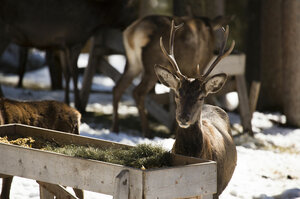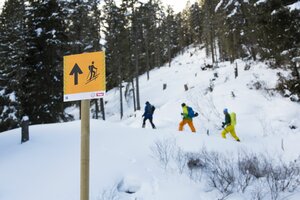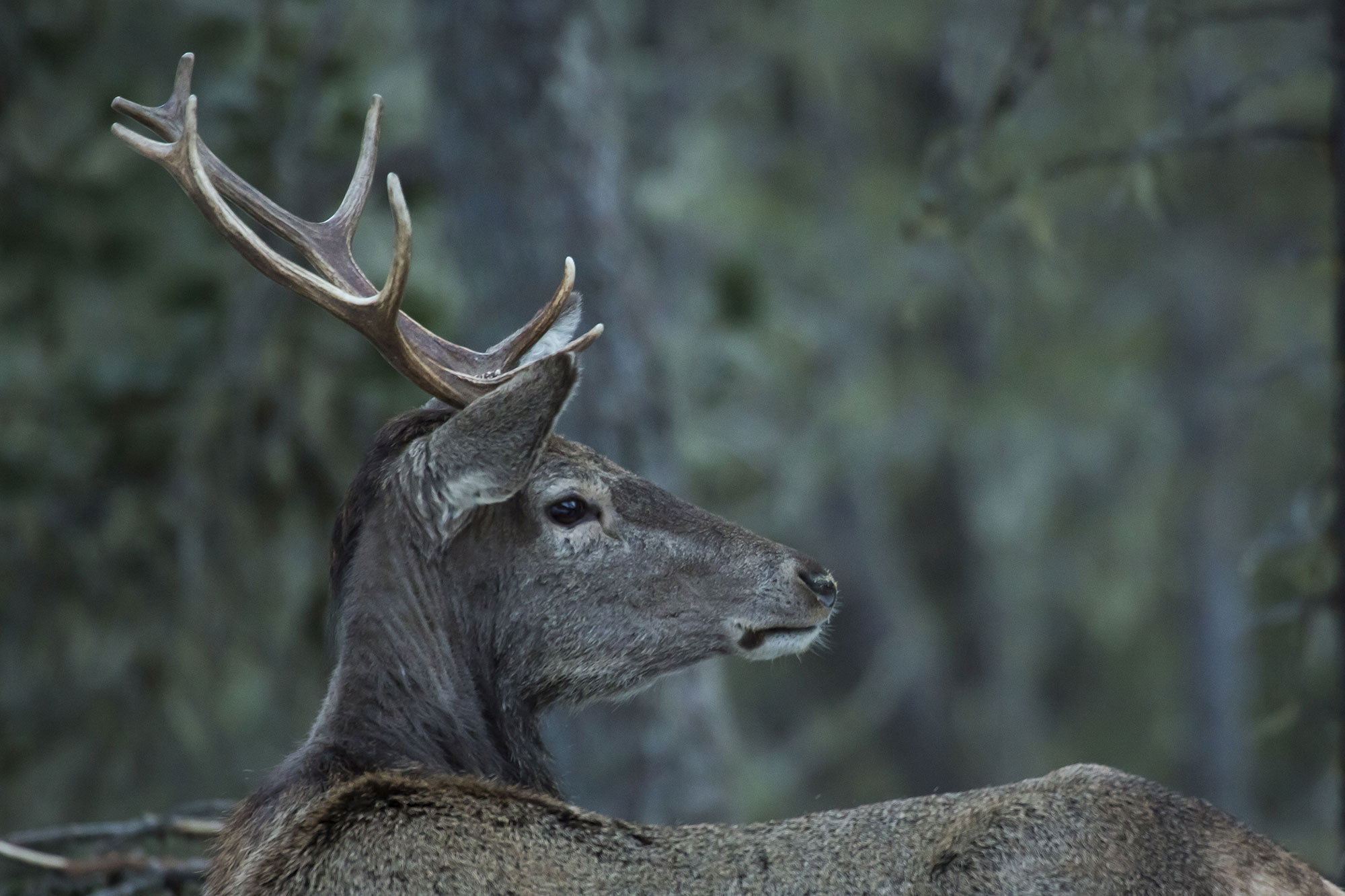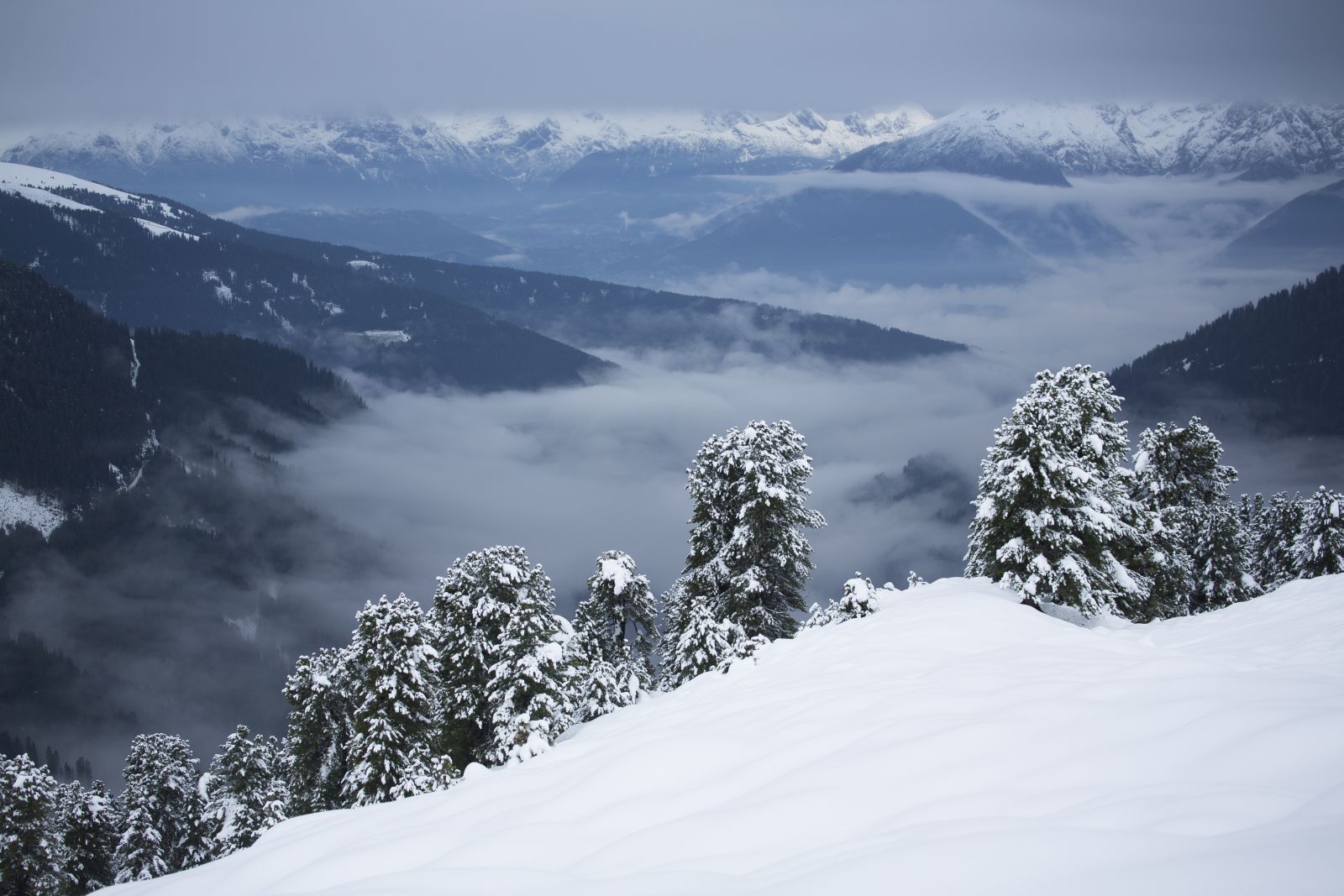Specific characteristics - Food in winter
The deer feed on grasses and herbs as well as leaves and shoots, as long as these are available. In winter the food is less nutritious and has a higher fibre content. When they cannot feed red deer are able to reduce their energy requirements significantly when a shortage of food in winter so requires.
Effects of being disturbed
If red deer are disturbed and driven from the feeding source , they need some time to adjust to the sudden food shortage. Temporary food shortages in winter or when animals are no longer able to get to their feeding areas because they have been disturbed can therefore cause problems, all the more so if they are used to being very well fed. If they are disturbed when feeding and the animals stop feeding, they have to absorb an excessive amount of food in the surrounding forest. They then rip even more bark off trees, causing the trees to die prematurely or be attacked by wood-destroying fungi (red rot).
Away from paths red deer react strongly to being unexpectedly disturbed. On the other hand, animals get used to well used paths and trails and at distances of about 50 m do not exhibit a tendency to flee.
Peace and quiet in the feeding and retreat areas is, therefore, a vital factor if they are to overwinter safely.
Endangered status
The red deer is widespread throughout central Europe. Their numbers have been increasing for decades and the area over which they are spread is getting larger.
Most of the indigenous red deer winter near feeding stations close to the retreat areas known to the hunters. There are currently more than 700 red deer feeding stations in Tyrol, with only a small proportion located close to known ski tours (well below 10%).
Code of Conduct:
| Animal species | Peculiarities | To be observed: |
| Red deer | 95% survive in winter close to feeding stations; react calmly to being disturbed if not unexpected, at an adequate distance, but very sensitive to unexpected dangers; when disturbed may stop feeding, with fatal consequences for animals and forest | Always bypass deer feeding and retreat areas! Observe direction signs! Relocate ski tours or feeding stations |
| Roe deer | In winter keep close to the feeding areas, crouch down and flee less far; return to feeding after being disturbed; increased need of energy when disturbed, especially when very active at dusk | Give a wide berth when roe deer are feeding and keep to the forest road; no tours at dusk in the forest and on the edge of forests |
| All species of game | Active at dusk | If possible, no tours at dusk and otherwise keep to forest roads and ski slopes. Observe local ski slope rules! |
Tyrolean Ski and Snowboard Tour Plan
We have worked intensively with environmentalists, hunters and conservation experts to draw up the Tyrolean Ski and Snowboard Tour Plan to investigate the impact of ski and snowboard tours on flora and fauna in the mountains.
If you need any further information about the protected sites and species and want to know how we came to choose them, you'll find all the basics in the Tyrolean Ski and Snowboard Tour Plan below, which is available for downloading.









